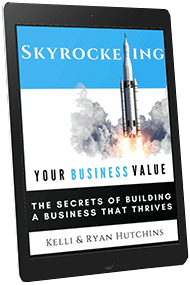
Valuing Assets in a Sole Proprietorship
Technically speaking, you can’t legally sell or transfer a sole proprietorship. However, you can transfer ownership of the business by transferring the ownership of relevant assets. Once you transfer the ownership, the company dissolves. The buyer can then use the assets under any new type of business structure.
By definition, a sole proprietorship has only one owner. This type of business structure is common because of its simplicity. Unlike a corporation, legally there is no difference between the sole proprietorship and its owner. The company doesn’t own assets or sign contracts – the owner does. However, you can sell all the business’s assets and perhaps its liabilities. Below we discuss the steps to transfer ownership of assets in a sole proprietorship. For additional questions reach out to Peak Business Valuation by scheduling a free consultation.
Separate the Assets
The first step in transferring ownership is to separate the assets of the sole proprietorship. In a sole proprietorship, some business assets may double as personal ones. It is best to keep personal assets and liabilities separate from business assets and liabilities. However, in such cases, be sure to list which assets you are selling. A good contract will make everything clear. Keeping them separate also helps ensure that a valuation expert can properly value the assets of the business.
Value the Assets
After separating the assets, the next step is valuing those assets. A proper valuation is performed by a neutral third party. A valuation expert values each asset separately. But they will also figure out how much the sole proprietorship is worth as a whole. They do this by adding up all the assets and subtracting all the liabilities. Not only will they value tangible assets like equipment and machinery but also intangible assets such as goodwill, patents, and processes. Liabilities include expenses like funding from loans, lease expenses, etc. Receiving a business valuation will help in determining a fair value to sell your assets.
Sell the Assets
When selling the assets in a sole proprietorship, some assets are simple to sell and value such as equipment or inventory. However, other assets like company brand and goodwill are difficult to value and the process is more complex. Below we discuss a few of the assets you may sell within a sole proprietorship.
Tangible Assets
Traditional, tangible assets may include:
- Inventory
- Land
- Machinery
- Supplies
- Property
Such tangible assets are relatively easy to sell and value. Most often the basis of value is comparable market values. For instance, real estate is determined by comparable sales in the local county. Whereas inventory is typically valued at current wholesale prices.
Intangible Assets
Selling the Business Name
Your company name often carries significant value. As a sole proprietor, you may be doing business under your own name or through a DBA (doing business as) name. If you have a DBA name and wish to sell it, talk with your county about how to transfer it. In some counties, the process is as simple as changing the name of the individual who registers it. In other counties, the process is more complex.
Selling Ongoing Contracts
A potential buyer will often wish to assume ongoing contracts. In general, it is legal to assign your duties under contract to a third party. This makes it simple to transfer contracts with the business. However, some contracts may have restricting clauses preventing this. If so, it is best to discuss with your customers and get an okay from them to transfer them to the buyer.
In addition, your customer list is one of the most valuable intangible assets in your business. This helps guarantee the buyer that they can take your assets and sell them right away to customers who already wish to buy them.
Including Goodwill
Goodwill is one of your most valuable assets. It may be worth several times more than your business’s other assets. Goodwill includes intellectual property, patents, brand names, copyrights, etc.… To include goodwill in the sale, it is important to get a business valuation to determine the value of the business including goodwill.
Draft a Written Agreement
Once you determine what you are selling and at what price, have your legal representative draft an agreement. This agreement will specify what you are selling and the terms. This includes payment methods and conditions such as signing a non-compete agreement.
Once both parties agree on a price, they will then sign the agreement. A written agreement will help ensure both parties know exactly what to expect and what assets are transferring in the sale. The assets then change hands and the transfer is complete.
Plan for Taxes
In the sale of a sole proprietorship, the IRS considers each asset sale a transaction. Therefore, the tax treatment for each asset is different. Inventory is different from equipment or property. Depending on the purchase price, selling price, and IRS rules, each sale may be a gain or loss. Discuss with your legal representative, the impact of taxes when transferring assets.
Prepare State Filings
A sole proprietorship is the least formal business structure because it is just one person acting as a business. As such, no formal documents are filed with the state. In most cases, transferring a sole proprietorship requires no state fillings. And in general, there is less paperwork. However, the new owner will need to get new tax IDs and business licenses in their own name.
Transfer the Assets
After both parties sign the written agreement, the seller will hand over everything the buyer needs to run the business and all the assets agreed upon. This may include items like software licenses, customer lists, property, and equipment.
Summary
When selling or transferring a sole proprietorship it is up to you to decide which assets you want to sell. However, if you want to sell for the highest asking price, it is important to include both tangible and intangible assets in your business. Doing so will make it more attractive to potential buyers.
When transferring a sole proprietorship, it is important to obtain a valuation. A quality valuation can help determine the fair value of the assets and the value of the business. Peak Business Valuation is a leading business appraiser in Utah. We provide asset valuations to help in selling or transferring the assets in your sole proprietorship. Questions are always welcome! Schedule your free consultation below!
Schedule Your Free Consultation Today!
